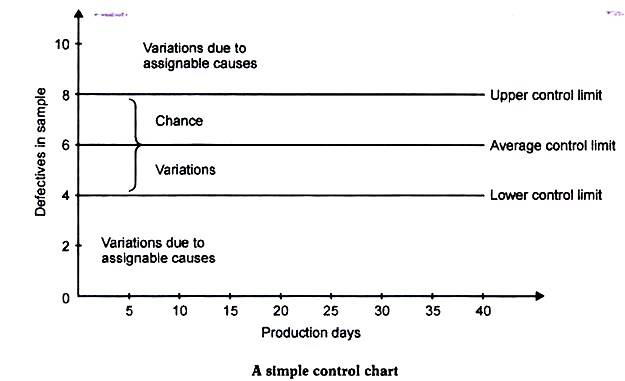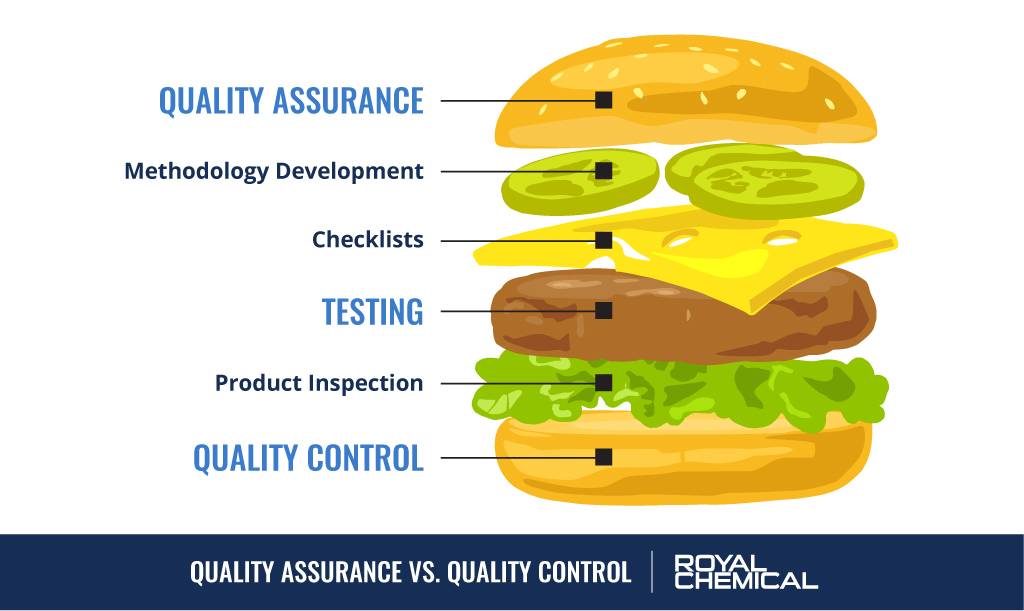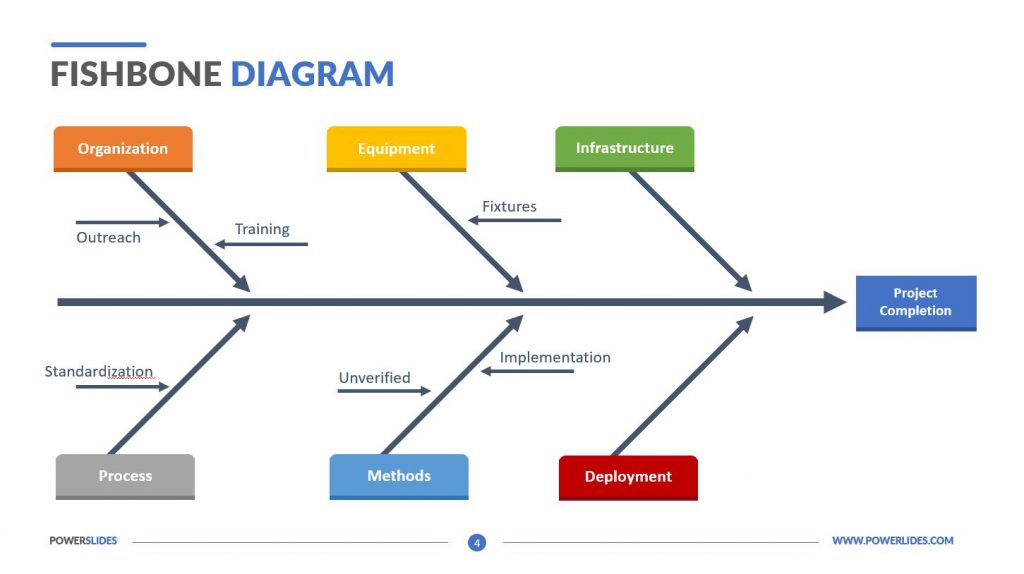Table of Contents
“Quality is never an accident;
It is always the result of high intention,
Sincere effort, intelligent direction, and skilful execution;
It represents the wise choice of many alternatives.”
– William A. Foster-
Let us first understand the Quality Control Processes and quality control facts.
Quality control processes and knowing the quality control facts are crucial for any enterprise or business that seek to ensure to maintain or improve the quality of their product.
Following Quality control procedures, entities also review the quality of all factors involved in the production.
ISO 9000 defines quality control as ” A part of quality management focused on fulfilling quality requirements”.
Upcoming Batches of Six Sigma Green Belt Certificate :-
| Batch | Mode | Price | To Enrol |
|---|---|---|---|
| Starts Every Week | Live Virtual Classroom | 19500 | ENROLL NOW |
To meet the required quality benchmark products and services are examined and tested
Quality control is one aspect of the overall quality management program that especially focuses only on fulfilling quality requirements.
Quality control process monitors the product and the method by which it is produced, stored and transported.
It involves testing of units to ensure that they are within the specifications of the final product.
Testing determines the need for any corrective action throughout the manufacturing process.
Good quality control procedures ensure that the companies meet the consumers demand better products.
To ensure quality control both, the management and employees must strive for perfection.
Also Check Our Other Courses
Quality control procedures vary from product or industry.
Whether it is the food industry, pharmaceuticals, automobile or textile.
Every step of the manufacturing process, testing for quality control is involved, from testing raw material, pulling samples to the finished good.
This process involves various measures:
- Establishing well-defined controls to standardize production and reaction to quality issues.
- Training personnel
- Setting benchmarks
- Testing products for statistically significant variations.
Five important things one must know about quality control process:
#1) Enterprise resource planning (ERP)-
To deliver the highest quality, set standards with robust enterprise resource planning with quality assurance.
This will ensure that you have the necessary tools to effectively manage your quality objectives.
The ERP will lead you to manufacture defect-free products that are of consistently better quality.
#2) Happy customer-
Quality product implies happy clients.
Better your quality happier the customer
Therefore it is indeed very important to pay close attention to ERP.
Also, the quality control program implementation is essential at every stage, from production, to design, and distribution.
#3) Better workflow and reduced costs-
Good ERP provides better business analytics that can quickly and easily spot problems.
This helps better decision making and cost reduction.
According to a recent study, better information about business operations that lead to smarter decisions can account lowering production cost by nearly 23% and administrative cost by 22 %
#4) Quality control breeds Customer loyalty-
It is important to note that quality control procedures not only result in good products but also repeat and lifetime customers.
Also by providing the quality control information on the product leads into the perception of total trust, commitment and loyal customer.
#5) Compliance-
A good ERP quality control process prevents workplace hazards and facilitates related reports.
Moreover, it ensures the ability to create and implement safety testing procedures.
To sum up, these safety testing procedures accurately fit the needs of individual businesses as compared to generalized testing.
#6) Statistical quality control (SQC)
Certainly, this is an upstream method to measure the degree of conformance of various parameters.
The parameters for processing of products are as per the previously laid down specifications.
SQC is based on the statistical theories and methods of probability to control the;
- Incoming materials
- Also, Process during production
- Final product
Read About: Six Sigma Green Belt Course In Delhi
The following methods can be used to achieve Statistical quality control :
Acceptance sampling:
Pick and test a sample of finished goods against the standard quality measurement.
Irrespective of whether the product conforms to the design specifications or not.
It defines the tolerance limit or variation in quality against standards that are acceptable.
A little divergence is natural and cannot be avoided.
Not more than a specified percentage of defective items are passed and sold in the market.
The product conforms to the quality standard as long as the plotted points are within the accepted boundaries.
Acceptance sampling is effective when the percentage of products is representative of the whole lot.
The whole lot is rejected if the sample is defective . Or 100% inspection.
Random samples are chosen rationally and scientifically.
Particularly to avoid cost related to the rejection of outputs and to ensure that the quality is as per specifications.
SQC demands to stop the production if the points begin to show a trend away from the centre or begin to fall outside the boundaries in either direction.
It is important to inspect the Machinery, raw material, lubricants to analyse the undesirable results.
Increase in the utility of acceptance sampling
Utility of acceptance sampling can be enhanced through the following measures:
Production managers must increase the number of samples
Increase the sample size.
Increase the number of products to be tested from 100 to 200 or even more in a lot of 1000 units.
Tighten the Sample plan by decreasing the acceptance numbers.
Increasing inspection efforts reduce the passing of defective goods but at an increasing cost.
This increasing cost is justified if the cost due to passing defective goods is more than inspection costs.
Read About: Six Sigma Green Belt Course in Noida
b) Process sampling:
Evaluating the products during the production process leads to early detection of defects.
If the defects are beyond the tolerance or acceptance level the production must be stopped.
Variations in production process are due to following reasons:
- Variation due to chance-
- These variations occur due to minor causes that occur randomly.
- Moreover, managers can do very little to correct it during the production process.
- Variations due to assigned causes for which the reasons can be-
Firstly, differences amongst workers
Secondly, difference amongst machines
Thirdly, differences amongst materials
Lastly, differences in interaction between the workers , machines and materials.
Control charts facilitate the Process sampling.

#7) Quality Control (QC) and Quality Assurance (QA):

Source: Royal Chemical burger blog graphic
Since these two terms appear to be similar are often used interchangeably.
There are distinct differences between the two concepts
QC and QA are two aspects of quality management.
#8) Quality assurance is that part of the quality management process that provides the confidence that quality requirements will be fulfilled.
A Quality system that demonstrates and implements all the planned and systematic activities to provide confidence that the product or service fulfils the quality requirement, fall under quality assurance.
The confidence provided is twofold-
internally to the management,
Externally to the customers, regulators, government agencies, certifiers, third parties.
#9) Quality control- The operational techniques and activities used to meet the quality requirement, fall under quality control process
It is more the inspection aspect of quality management.
Read About: Six Sigma Green Belt Course in Gurgaon
Primary tools required in the Quality control process:
There are various approaches to the quality control process.
Quality control tools must be determined before the quality control process begins depending on your specific product.
#10) Inspection–
It is a critical part of measuring quality.
Random product testing for small operations can be an effective technique.
Statistical sampling and the science of probability is best for large volume production.
#11) Checklist–
Quality control process requires you to check off a list of items that are imperative for the production and sale of your product.
#12) Testing–
The product is tested to its limits and beyond to evaluate where it will stop functioning as intended.
It is used to stress the mechanical properties of the product.
For instance, elasticity, material strength, impact resistance, test for vibration and temperature.
#13) Product Failure and safety testing-
This includes purposely breaking or damaging to see how well it holds up.
For instance, new cars are put under rigorous crash test to determine how safe or effective the product is before launching it into the market.
Similarly, pharmaceutical industries test and retest their drugs unless the U.S. Food and Drug Administration states it safe for human consumption.
#14) Total Quality Control-
The company may test every department or product component if there is a drop in sales or a decrease in stock price is noticed within a firm.
To analyse where the quality has been compromised or depleted.
For instance, a sales company may examine the customer service department to re-examine if the agents are providing prompt and quality service.
Furthermore, it may also check on the marketing department to evaluate the effectiveness of the promotional activities.
Check Out- Six Sigma Green Belt Course in Mumbai
#15) Control chart-
This gives you an insight into how the processes historically change using controls.
It helps you find and rectify the problem as they occur.
Furthermore, it predicts a range of outcomes and analyzes variations.
Fishbone diagram– The visual of this diagram helps you determine the specific causes of the specific problem.

Source: WWW.POWERSLIDES.COM
Stratification– Stratification separates data so that it is easy to identify patterns and specific problem areas rather than looking at all factors together.
Pareto chart– This type of bar chart provides a visual analysis of problems and causes.
Also, it helps focus on the most significant issues.
Histogram- it is a common graph that uses bars to identify frequency distributions that indicate how often defects occur.
Scatter diagram- Plotting information along two axes on this graph can help visually identify relationships between variables.
#16) Internal vs. External quality control process :
You can opt for internal or external quality control depending on the product you are manufacturing and selling.
Establishing In- house protocol for inspecting your system is called an internal quality control process.
- It depends on the management decision
- It ranges from routine checking of equipment
- Employee data analysis
- Analysing running standards and controls
When products or data are sent to an outside business not affiliated with your company, it is an external quality control process.
For instance, a food company may analyze the nutritional value and the shelf life of a food item produced in their lab.
Also, the same food item is sent out for the verification of the result.
This verification from the Food and drug administration (FDA) is important to obtain and also prove that the company’s production methods are sound.
Read About: Six Sigma Green Belt Course In Chennai
#17) Planning the quality control process:
Deliberate on creating a step by step process of testing the product.
Identify the different aspects of the product.
Consider different scenarios for the use of the product and perform as many tests.
Experiment with the quality control test and revise the process.
Eliminate the redundant test.
Revise and review the quality control plan to continually pinpoint areas.
Add a new subtest with every new product.
Rules for Quality Control Process:
Applying the highest quality control standards increases the price of the product that is paid by the end-user.
But before you get the price you are the one investing in the manufacturing of thousands of high quality and defect free products, so make sure-
Do not forget DVT, EVT, PVT, and DFM
At least, 500 to 1000 units should be produced in a few test production runs, whenever there is an innovation or a product is manufactured for the first time
Big companies can have more extensive test runs of 2000 to 5000 units.
It is to test and debug processes and spot the issues rather than producing 20,000 defected units.
These tests are –
DVT is design validation test
EVT is engineer validation test
PVT is product validation test
DFM is design for manufacturing
DFM is a part of product development, engineers and designers must be aware what kind of design and solutions are scalable and reliable for production.
Read About: Six Sigma Green Belt Course in Hyderabad
#18) Quality control of each factor–
There is no perfect manufacturing process.
There are many factors , sub factors that can go wrong.
For example- People, equipment, processes, materials, management and environment etc.
Choose to deliberate on quality control at each level and each factor.
#19) Contract Manufacturing–
Have someone experienced with your type of product.
Contract manufacturing is the most common model for most companies of all sizes.
It reduces the risk as the contract manufacturers take on the responsibility.
Important to note who are your customers-
If you are selling to the wealthiest markets where customers do not compromise on quality, they will not forgive you for a functional yet defective product.
Whereas, in some countries, customers are okay with poor packaging and scratched products.
So you can target customers with low income who do not expect high end products for cheap.
Also you need not excessively chase for the highest quality standards for low-end products.
#20) Define your quality control procedures-
The choice of quality control methods depends precisely on the product requirement and functionality.
Mechanical parts must be examined to ensure they are scratch free.
Compare the colour, dimensions and material.
Electronics, the quality of your PCBA must be checked by using visual inspection, X rays, in- circuit test, automated optical inspections etc.
It must be done when an assembled PCB is getting out of the production line.
Set your sample size correctly-
To save out on time and money it is important to have proper sample size depending on your product requirement.
It is unaffordable to check individual pieces for a production of 10,000 units.
Small sample size may result in failing to spot the defective products.
If you check 200 out of 10,000 units, there is a high major-defect-rate of 10% and you would need to check another 1200 units.
Quality Control Checklist–
You need to decide what is acceptable for your product and what is not.
Also you need to develop procedures and checklists for the quality control of your product.
Have the checklist ready, which clarifies the quality control process and reduces the cost.
Read About: Six Sigma Green Belt Course in Kolkata
Check the quality control process-
It is important to identify and capture the problems early on the production line.
Have the understanding of the manufacturing process and also have the budget to hire someone who is dedicated to the factory overseeing the manufacturing of your product.
Apply quality control at every step–
Ensure incoming quality control of raw material and components.
Post manufacturing, ensure outgoing quality control and check whatever leaves the factory.
Moreover, plan different parts of the production at various locations.
Ensure quality control of packaging, fulfillment, and everything else in case you want your product to meet highest expectations.
Never trust factories-
Factories may assure that they have internal quality control procedures.
Furthermore, they may promise 0% defect rate.
But not all factories would deliver that.
Define and sign everything that you agreed on as documents.
Have a balanced invoice only after you checked the goods rigorously and confirmed everything is in place.
Respect your suppliers-
Make efforts to perceive the world from the suppliers angle.
Be careful not to pressurise your supplier.
If you have a small batch not generating much revenue , factories could make some cuts here and there , also they could drop you.
They could also accept your order and on receiving a bigger order they could postpone or delay yours.
Cost of quality control process-
Another important aspect of quality control is the cost involved in ensuring the quality of the products.
It should be a minor proportion of the total cost incurred.
How much minimum depends on various factors such as :
- Type of product, its functional use and hazards involved in its use.
- The degree of quality awareness prevailing in the enterprise by implementation of concepts like Total Quality Management(TQM), and Total Quality Control(TQC).
- Finally, additional costs to be incurred for ensuring higher quality standards.
- There is no optimum value between quality and product cost.
Importance and advantages of quality control process, quality control methods and quality control assurance are undeniable.
The brand and products build goodwill, image and eventually sales.
By enhancing the efficiency, standardization and working conditions, the quality control process minimizes the cost.
It helps the entrepreneur analyze the cost of his product much in advance and determine a competitive price for the same.
An entrepreneur can confirm whether his product is in accordance with the standard set by the government.
Furthermore, it facilitates the entrepreneur to take necessary actions to comply with the set standards.
Recommended Reads:
- Best Six Sigma Course in India
- Best Six Sigma Courses in Bangalore
- Best Six Sigma Black Belt Courses in Delhi
- Best Six Sigma Courses in Chennai
Recommended Programs
Lean Six Sigma Green Belt
Certification Training
Ranked No.1 Six Sigma Certification in India | Aligned to IASSC Book of Knowledge | Combining Lean and DMAIC Methodology to Impart Key Skills | Gain Experience of 12+ Projects | Both Classroom and Live Online Options Available
Lean Six Sigma Black Belt
Certification Training
Ranked No.1 Six Sigma Black Belt Certification in India | 9361+ Participants Trained | Aligned to IASSC Book of Knowledge (BOK) | Gain Advanced Expertise Over Lean and Six Sigma Methodology| Gain Experience of 12+ Projects | Both Classroom and Live Online Options Available
Lean Six Sigma Master
Black Belt Certification
Step-in to a new designation of being Explicit Quality Professional | Get acknowledged as a Lean Six Sigma Evangelist | Connect to the rarest community of worldwide Black Belt specialists | Validate your professional skills in leading intricate projects | Execute Lean methodologies with perfection.
Explore Popular Category

